Exercises for Flat Feet
- Best Asics Shoes for Flat Feet - October 25, 2024
- Best Running Shoes for Flat Feet - October 22, 2024
- Posterior Tibial Tendonitis - October 21, 2024
Flat Feet, or pes planus, can be genetic or develop over time due to weakened muscles in the feet and ankles. Adult-Acquired Flat Feet occur when the muscles in the foot gradually weaken, often due to lack of use or old injuries. Strengthening and stretching exercises can reduce pain and improve arch height.
In this guide, we’ll provide the best exercises for strengthening and stretching your feet, designed to help you manage the symptoms of Adult-Acquired Flat Feet.
1. Strengthening Exercises for Flat Feet
One of the leading causes of flat foot deformity is the gradual weakening of the muscles that support the foot and ankle. Strengthening these muscles, whether due to injury or lack of use, is key to reducing pain and improving arch support.
Here are three of the most effective strengthening exercises for Adult-Acquired Flat Feet:
Posterior Tibialis Strengthening Exercise
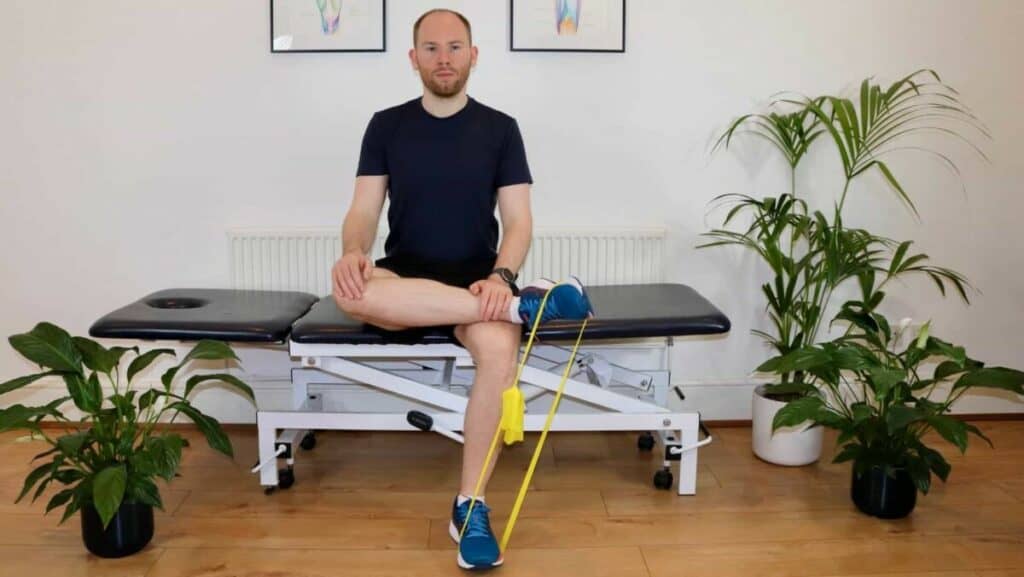
Strengthening the Posterior Tibialis can significantly improve the stability of your foot arch.
How to Perform:
- Sit down and place your affected ankle over the opposite knee.
- Loop a resistance band around both feet.
- Point the toes of the affected foot and lift them against the band’s resistance.
- Slowly return to the starting position.
Repetitions: 15
Sets: 3
Frequency: Once daily
Soleus Calf Raises
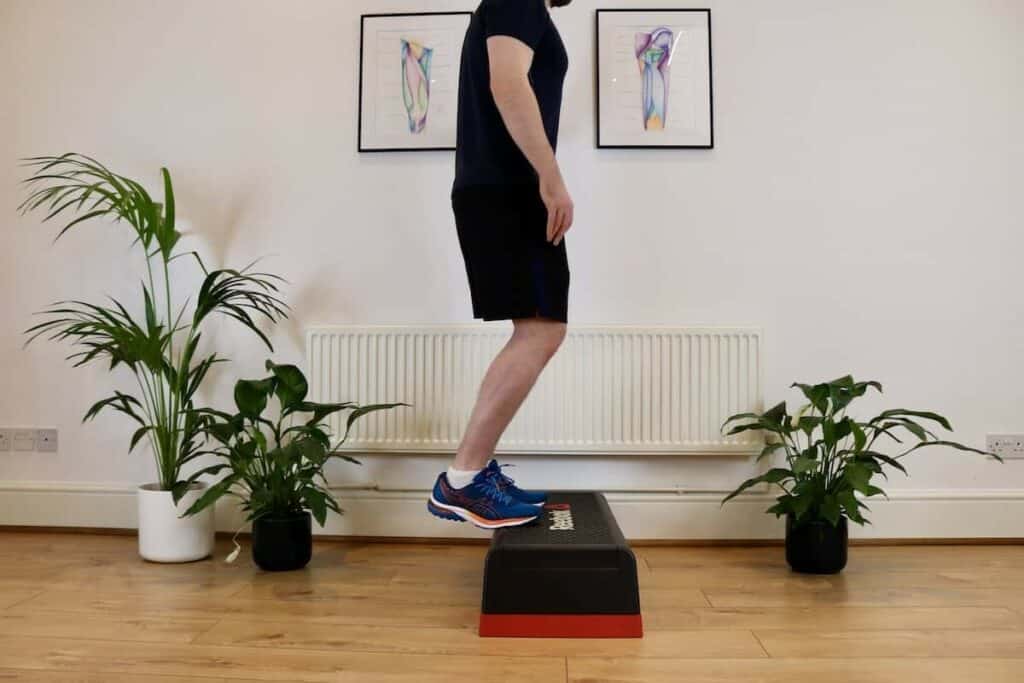
This exercise targets the Soleus muscle to strengthen the lower leg and improve foot stability.
How to Perform:
- Stand with both knees bent, and position yourself at the edge of a step.
- Keep your knees bent as you lift your heels off the ground.
- Slowly lower yourself back to the starting position.
Repetitions: 25
Sets: 3
Frequency: Once daily
Flexor Hallucis Longus Strengthening
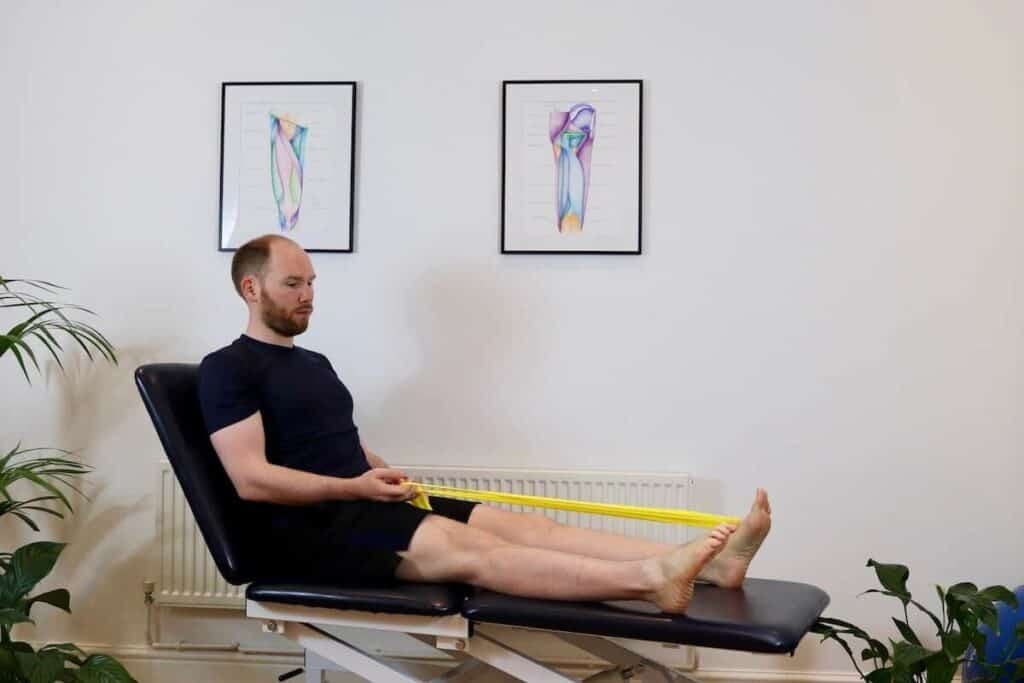
This exercise helps strengthen the Flexor Hallucis Longus, a key muscle in maintaining arch stability.
How to Perform:
- Wrap a resistance band around your big toe.
- Lower the big toe to the ground against the band’s resistance while keeping the other toes still.
- Slowly lift your big toe back up.
Repetitions: 25
Sets: 3
Frequency: Once daily
Tight calf muscles, including the Gastrocnemius and Soleus, can strain the foot’s arch. Stretching these muscles can alleviate tension and help increase the arch height.
Here are two stretches to target these important muscles:
Soleus Muscle Stretch
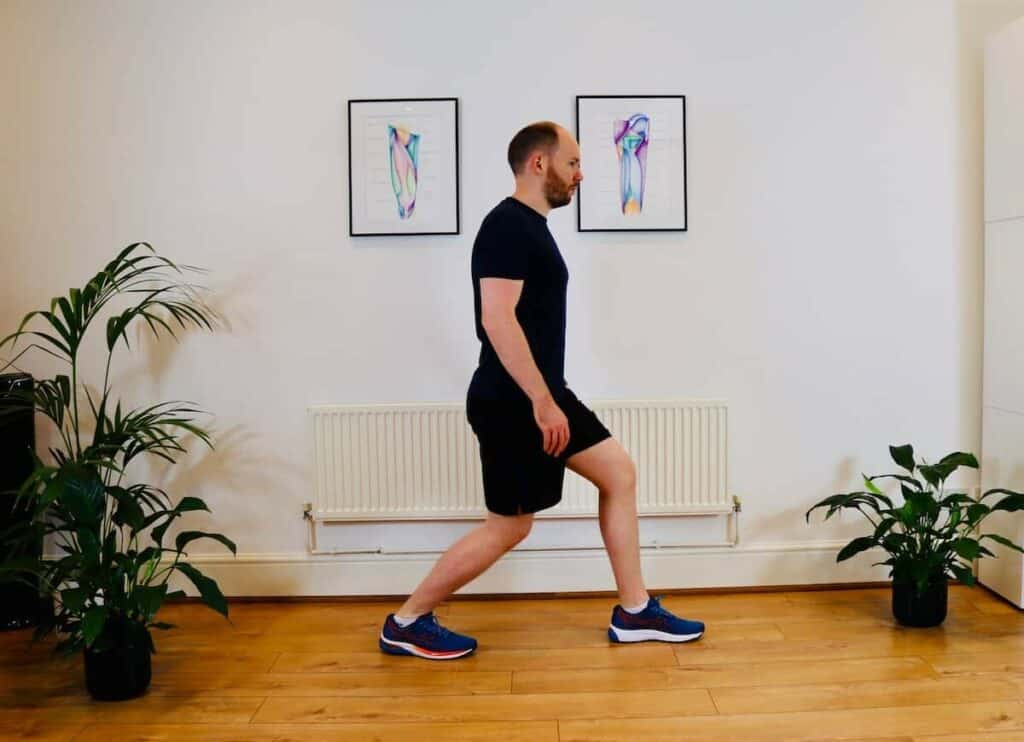
This stretch focuses on the Soleus, a muscle that plays a key role in foot stability.
How to Perform:
- Stand upright with your affected leg behind you.
- Bend your back leg while keeping your heel firmly on the ground.
- Stop and hold when you feel a stretch in the back of your leg.
Hold: 45 seconds
Repetitions: 3-4 times daily
Gastrocnemius Stretch
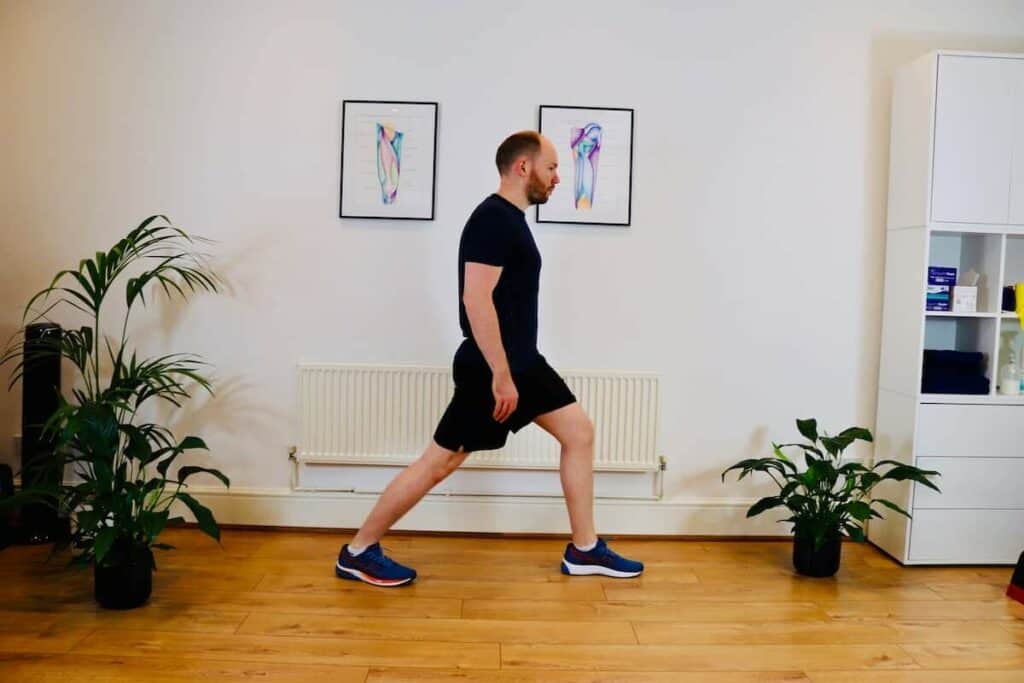
Stretching the Gastrocnemius can help reduce tension on the foot arch.
How to Perform:
- Stand with the affected leg behind you, keeping the knee straight.
- Bend the front leg slightly while keeping both heels flat on the floor.
- Lean forward until you feel a stretch in the back leg.
Hold: 45 seconds
Repetitions: 3-4 times daily
Plantar Fascia Stretch
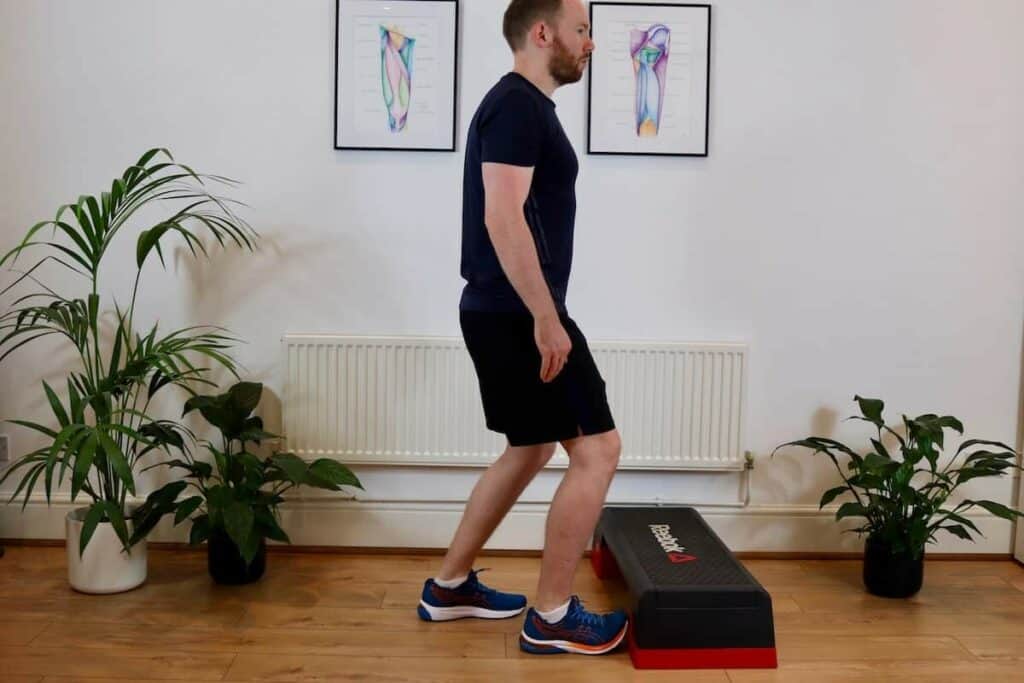
The Plantar Fascia stretch helps reduce tension on the bottom of the foot and improve flexibility.
How to Perform:
- Stand with your toes extended against a step or a wall.
- Bend your knee over your foot until you feel a stretch in your arch and heel.
Hold: 45 seconds
Repetitions: 3-4 times daily
Final Thoughts
Strengthening and stretching exercises can help alleviate the symptoms of Adult-Acquired Flat Feet. Consistency is key—performing these exercises regularly for at least 12 weeks will give you the best results in reducing pain and increasing arch height.
To optimise the effects of these exercises, they should be performed alongside using the correct footwear to support your feet while their strength improves.
Feel Good, Move Well, Be Better
